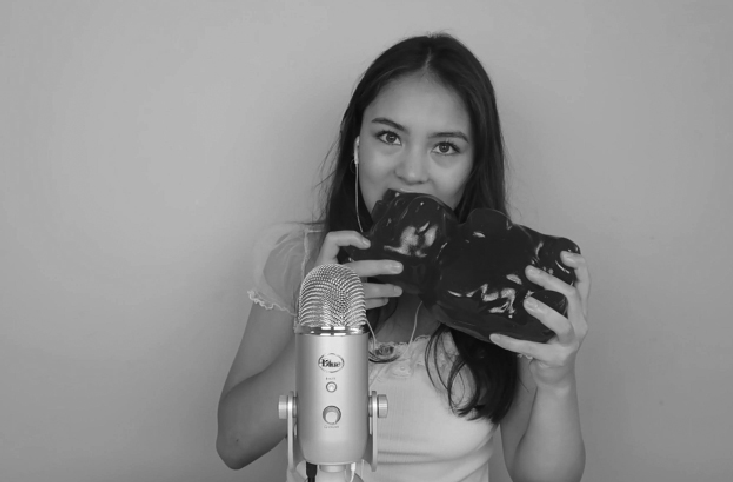Following the death of Vine and its successor, Musical.ly, the lack of a platform for 14-year-olds to post short clips of themselves lip-syncing fueled the craze of TikTok.
But there is much more to TikTok than casual lip-syncing. The platform has given artistic and comedic hopefuls an outlet to create fun content as well as build their social media followings.
The app that aided in the creation of VSCO girls, e-boys and catchy, challenge-style dances represents the changing culture of social media influencers.
The fame that used to be saved for the big screen is now moving to handheld screens due to increased accessibility. No longer a matter of celebrities setting trends, social influencing has moved online and is open to anyone who would like to pursue it.
“I think people are definitely not watching as much T.V. and a lot more kids spend time on phones, tablets and Youtube, so it’s changing a lot to where these are the celebrities, like the TikTok boys are literally so big and they blew up,” said a former Gunn student, with 36,000 followers on TikTok, who asked to remain anonymous. “I think that it is cooler because usually celebrities, for example, the Kardashians, were born into fame and it was kind of given to them. Some people on TikTok are famous because they’re hot but for the most part, I feel like it’s giving people that wouldn’t normally be famous a platform.”
With a following of over 330,000 people on Instagram, Eve Donnelly, a former Paly student, started her Instagram account with the spontaneous decision to record herself eating honeycomb, a popular food used for autonomous sensory meridian response videos.
At first, she used ASMR — a current internet trend which involves creating “satisfying” sounds, such as eating or whispering, to induce a tingling sensation in the listener — to record her eating. Then she moved on to making YouTube videos with a wide variety of topics, including Omegle chats and wedding reaction videos. The responses were not all positive, but that only fueled her fire.
“Most of the comments were negative and it just egged me on, how people could get so angry over something as simple as me eating honeycomb and I wanted to get a rouse out of people,” Donnelly said.
As Donnelly gained followers, the material featured in the Instagram videos she posted became stranger and stranger, ranging from eating an entire raw egg to licking condiments off her friend’s foot that raked up more than three million views.
Because of the simplicity of this content, sophomore Hailey Callan said that she believes while celebrities gain their fame through talent, luck is more applicable for social media influencers.
“I personally think that celebrities should continue to mainly be actresses, actor and singers, because they tend to be famous for more clear reasons,” Callan said. “I personally don’t understand why social media ‘influencers’ have so much fame, because I feel like they tend to get recognized more randomly and it’s more by luck than by being talented in one specific area, such as music or acting.”
Though to Callan, posting on social media shouldn’t necessarily beget fame, she acknowledges that it still allows the influencers on the platform to be able to communicate and make a positive difference.
“However, I still think social media influencers can have a good impact online if they use their platform to spread positive messages to their followers, as many of them are young and still figuring out the world,” Callan said.
Donnelly and the former Gunn student see many benefits to the role of influencer. The former Gunn student said that he enjoys how an influencer can grow alongside the audience’s shifts in interests, giving the creator flexibility, while Donnelly appreciates the reach of her channel.
“The high points are definitely meeting people in real life who watch and like my videos or just hearing about how my friends know people who found me on their own without knowing me,” Donnelly said. “It just shows you how far your content can reach. For instance, my friend told me that her friend from Israel said her whole school knows about my videos. It’s pretty cool to think about just a bunch of random people a million miles away who watch my stuff.”
As the accessibility of social media apps grows, so does the number of younger viewers. According to Hootsuite, 96% of 18- to 24-year-old American internet users use YouTube. As a consumer, Callan thinks this could be beneficial as it allows for the influencers to be able to produce content that relates to their audience.
“I think having younger kids on social media platforms benefits the audiences because they create more ‘relatable’ content, but it could also be dangerous as the internet is very public and anyone technically has the ability to see your profile and what you post online,” Callan said.
However, for Donnelly, the accessibility brings not only benefits, but can also bring some drawbacks.
“It’s giving more people the opportunity to have an influencer position,” Donnelly said. “And I guess it’s good sometimes because it can give people an outlet to express themselves and show their art and create for other people.”
Yet at the same time, Donnelly said, people may grow addicted to their fame.
“This validation void can’t be filled with enough likes or comments ever, and that is not healthy,” Donnelly said.“I think it could be a power trip on the one hand and if it doesn’t go well, we can see a lot of problematic e-boys and such. If it falls in the wrong hands, it sucks and it’s not a good thing. But for the people, the free world, everyone has the right to try and get famous. And if they did, it was for a reason.”

